Why I am bearish on the U.S. Dollar
The U.S. Dollar has been holding up quite nicely during this credit crisis. In fact, it rallied significantly from deeply oversold levels against the Euro and British Pound (remember Dollar-Euro at 1.60 and Dollar-Pound at 2.10?). However, America has a number of structural problems which will inhibit further appreciation. Moreover, former buyers of U.S. Treasuries in the Middle East and Asia are going to have domestic economic worries of their own very shortly and will not be supporting U.S. assets. This means that the Dollar will be a weak currency in the not too distant future.
Let’s address the structural weaknesses of the United States. The first issue is savings. As the Anglo-Saxon countries of Australia, Canada, New Zealand, the U.K. and the U.S. prospered in the 1990s and earlier this decade, their savings rates dropped precipitously. In the U.S., we saw a drop from 7% at the beginning of the 1990s to near zero before the credit crunch hit in earnest.
As a result, the U.S. has run a massive current account deficit, borrowing money from abroad in order to maintain adequate levels of investment at home. In essence, Americans were selling off pieces of the country to finance their spending. This is akin to an addict selling furniture to fuel his habit. In 2005 and 2006, this deficit was as high as 7.5% of GDP.
In the meantime, all of this deficit spending was financed by debt. Debt to GDP levels have reached unprecedented levels: 341% Total U.S. Debt to GDP, 98% Household Debt to GDP, 133% Household Debt to Annual Disposable Personal Income, 115% Financial Sector Debt to GDP — all as of Q2 2008.
While debt levels could continue to rise during good times, the present financial crisis has caused massive credit writedowns at U.S. financial institutions, restricting their capital and ability to lend. Debt levels will contract.
Now, the U.S. could try to shift the burden of borrowing onto the federal government to cushion the downturn this deleveraging will cause. And it will do so in part as Federal Government deficits are expected to reach into the trillions in the coming years. However,the U.S. will be greatly constrained by events in the Middle East and China in particular — major U.S. creditors. Both China and Middle Eastern countries will have large domestic economic concerns with which to contend. I anticipate they will pull back on their purchases of U.S> assets, as a result.
In the Middle East, the economy boomed as oil rose from $10 a barrel to $147. However, oil has recently come crashing down to $50 a barrel. This is happening in the midst of an enormous property crash in places like Dubai (see source articles below). Most oil-exporting Middle Eastern nations have a experienced a population explosion of late and this puts enormous pressure on government to create jobs and economic growth. With oil prices and property prices falling, there will be a hard landing in these countries. They will not spend their money buying U.S. Treasuries or agency paper in such a predicament.
Then, you have China, America’s largest creditor. China is seeing its manufacturing sector implode and a very serious stock market and housing crash. The situation there is much worse than we are led to believe as the Chinese have recently lowered interest rates considerably, have started large domestic stimulus packages and have even tried to depreciate their currency. Again, one should anticipate a much lower appetite for U.S. assets going forward.
Where does that leave the U.S.? To my mind, it leaves the U.S. in a situation where inflation will be the preferred mechanism to reduce the real burden of its mountain-like debt load. This is dollar bearish. Moreover, even if the U.S. cannot or does not inflate, the structural problems I have already run down will inhibit growth over the medium-term in the U.S. This too is dollar bearish.
The U.S. Dollar is riding high right now in part due to weakness abroad. However, as recessionary events start to play out, it will become more evident that the U.S. is structurally weak and that is when the Dollar will lose favor.
Other Charts
Sources
Dubai: Has the bubble burst? – The Economist
Dubai shares hit despite promises – BBC News
Heavily in Debt, Dubai Calls in the Bankers – Deal Book
Could China be depreciating? – FT Alphaville
Economic nationalism and the USD – FT Alphaville
China factory output down sharply – BBC News
China’s $586bn boost for own economy may have done the whole world a favour – Independent Ireland
China tops U.S. govt foreign creditor list – Sydney Morning Herald
China Property Slump Threatens Global Economy as Growth Slows – Bloomberg
Flow of Funds Data – Federal Reserve Board
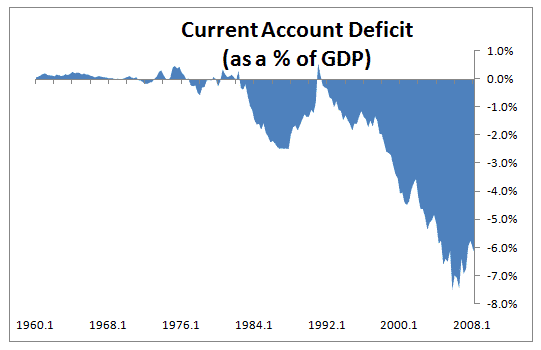
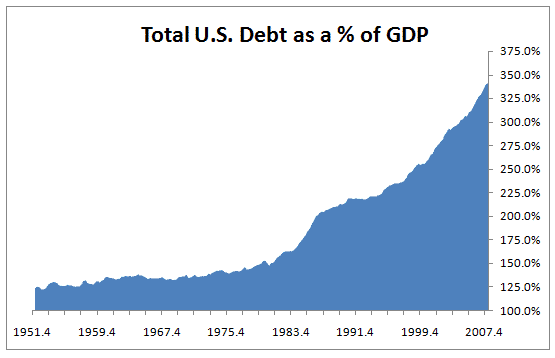
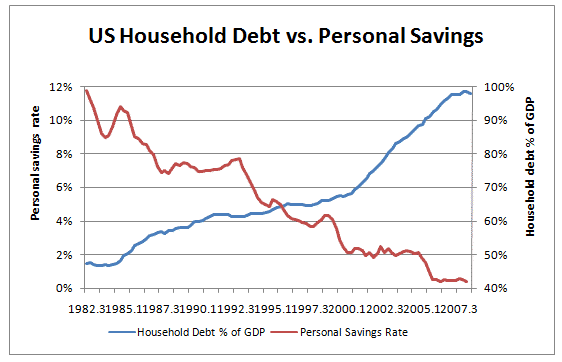
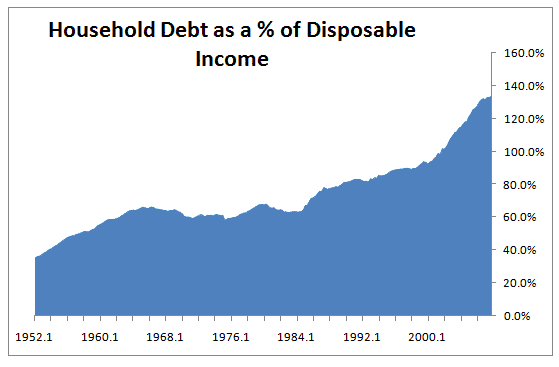
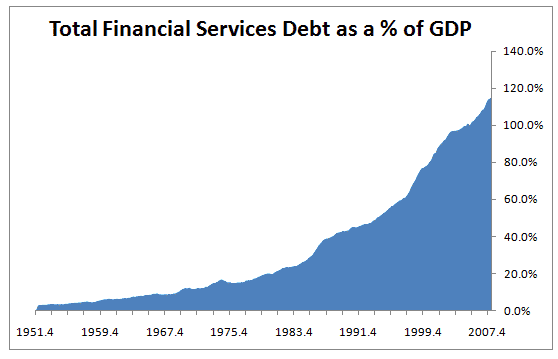
Ed – I agree that the dollar is overvalued, but what is it going to fall against? Isn’t the problem that inflation will be the preferred and prayed-for mechanism for virtually every currency to get the world out of this mess? If it’s going to be a race to ther bottom for major currencies, maybe they’ll just end up in a position similar to the present! Perhaps the Euro might lag in this race for a while, but don’t you think structural problems may be the proverbial elephant in this particular room?
The dollar may be over-extended. Still, which country is likely to repatriate their existing investments from the US? Not many. Once the day of reckoning arrives, you can expect to see a major move against the dollar. However, the trigger for that will be a stabilization of the international financial economy. That still has to be years away.
@Stevie b.:
Every bank will look toward QE when the going gets tough. But Angela Merkel’s refusal to add stimulus for the German economy tells you something about the German mentality. The ECB is a very German institution and I don’t think the ECB is going to be as prone to inflating as the Fed. So I see the Dollar falling vis-a-vis the Euro.
@Jimbo:
I have been amazed at how quickly things have moved during this financial crisis. Let’s wait and see how things play out — especially with regard to central bank purchases of agency and treasury paper. Another dollar move to the downside may not be far off.
I would point out that (1) at end 2007 Total Eurozone Debt (total public and private debt instruments plus total bank assets) was 454% of GDP and (2) the size of the Eurozone Bailout was USD 1.3 Trillion–almost twice that of UST’s. Also of interest, at end 2007, Eurozone bank assets totaled USD 30.5 Trillion while US bank assets were USD 11.1 Trillion; Eurozone GDP USD 12.2 Trillion, US GDP 13.8 Trillion. (Source: IMF)
@smoody:
good points regarding some weaknesses in the Eurozone. In particular, Ireland (private sector debt) and Italy and Belgium (public sector debt) are known as problematic. Nevertheless, I would argue that the imbalances in the U.S. are indeed greater due to the structural current account deficit and the low savings rate. This means that the U.S. is dependent on outside capital to fund its internal investment in a way that the Eurozone is not. That will be deadly in a world in which everyone is concerned with their own domestic economy.
Also see Marshall’s post How Much Longer For Dollar Strength?” for a different perspective on the continued weakness in U.S. fundamentals.
When “an addict sells furniture to fuel his habit”, the furniture is gone before he gets the drugs and gets ‘high’. That is not the situation. The addict [US] got the drugs [goods etc] by paying with an IOU [USD]. The US still has a lot of furniture. Who is the drug dealer in this metaphor? They are not very smart if they accepted IOUs for their product.
If the ‘creditor’ world is holding US dollars that have yet to be redeemed for USD assets, then it is in their interest for the USD to be as strong as possible, so it will buy the most assets. Is it reasonable to suggest that USD assets [US real estate, shares of GE, etc] are worthless compared to their foreign counterparts? That is what a flight from the dollar would confirm.
Conversely, The US debtor desires a weak dollar since that will relieve their debt burden.
@Scootie2008:
The Chinese and the Middle Eastern Sovereign Wealth Funds (SWFs) did begin somewhat belatedly to buy real assets (financial services shares) in order to diversify their holdings of Dollar-denominated assets.
The first shot across the bow was the attempt to buy Unocal. This was a worthy asset. But, protectionism stopped the Chinese. For whatever reason, the SWFs got it into their heads that buying financial shares was a good way to buy non-Treasury assets. I think they have since learnt this was a big mistake.
Meanwhile, they still own trillions in I.O.U.’s. So, you are correct, the U.S. should want a lower dollar in order to depreciate the value of those I.O.U.’s and the Chinese want a higher dollar (after all, they did actually start depreciating their currency somewhat just days ago).
The Chinese and the oil exporters liked the scenario of collecting U.S. I.O.U.’s, while everything was swimming along fine. Now, they are beginning to understand that they should have bought hard assets in the U.S. instead. This is their loss. It is debatable whether the Chinese or the U.S. is in the driver’s seat in this mutually-dependent scenario.
Were I a U.S. policy-maker, I would understand this and act accordingly.
It’s clear the US is not in the driver’s seat. It was Chinese purchases of long-dated USTs that defeated Fed monetary policy in 2004–the so-called Greenspan Conundrum. It’s worth musing, I guess, that if Fed policy had succeeded in 2004, the worst vintages of subprime mortgages would never have been written and the USD-based carry trade to Russia and other FSU countries would have slowed to a trickle. As one would expect, when monetary policy failed, everything went to hell in a handbasket. And now the Fed’s caught in a liquidity trap.
As to the Chinese, their position in USTs is simply too big to move without creating chaos. They’re in a trap of their own making.
The only thing not predicted was the dollar rally. This seems to have shocked everyone I am reading. The scripted dollar run did not happen. I understand the rationale that it is de-leveraging or panic that is propping it up, and the bailout money has not kicked in yet [backpedal?] My comments above are not meant to disparage the dollar. Isn’t the dollar is the most successful monetary invention ever? Is it possible that the lesson of this collapse is that globalization has succeeded, the world is united and the dollar is its money? The US has almost gone too far in its use of seignorage, this is the tipping point. The FED must realize that it is the world central bank and the world lender of last resort. If the Bernanke helecopter only flies over the US, then the dollar and the world financial system will collapse. I hope the Obama financial team does not try to save the US at the expense of the rest of the world.
@scootie2008:
The Fed does seem to be doing everything in its power to backstop the U.S. and the world as a lender of last resort. My biggest worry is that they have no control over where the money goes that they create and that they will have to deal with unintended consequences. For example, a lot of money has been pouring into treasuries recently. Meanwhile, corporate bonds have been selling off. Is this dichotomy the result of a marked difference in the outlook for corporate America versus the federal government?
I would posit that it is the result of a bubble and that this bubble is an unintended consequence of the Fed’s attempt to reflate the global economy. On some level, the Fed should allow market forces and fiscal policy to do some of the heavy lifting while maintaining a lender of last resort policy in the mold of Walter Bagehot.
By inflating the treasuries market, the Fed risks a boom bust in the dollar and/or U.S. interest rates.